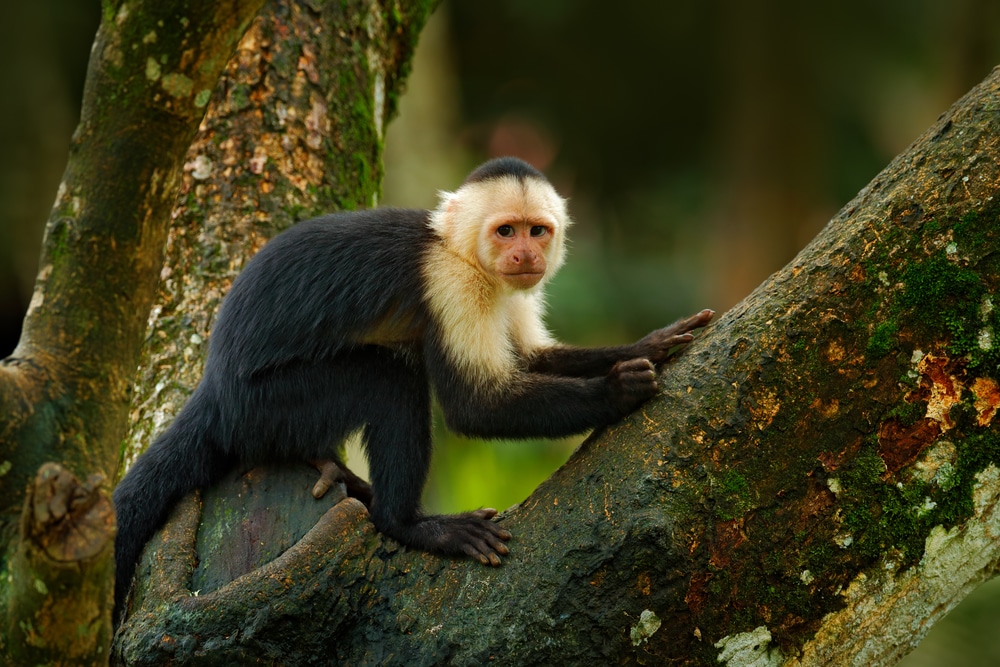Costa Rica’s magnificent mammals will make you want to pack your hiking shoes and visit now.
Costa Rica’s biodiversity is well-known, with many exotic rainforest animals that are easy to catch sight of when hiking, biking, or horseback riding through one of the many protected national parks. For an eco-adventure that is filled with interesting discovery, a hiking trip to Costa Rica is just the ticket.
Among others, here are some of the fascinating wild animals that you will find in Costa Rica’s rainforest, cloud forests, and dry forest plains.
Sloth
Sloths have 3 toes with long, curved claws on each foot. The claws allow them to hang upside down from tree branches high up in the canopy. As their name implies, they move very slowly. On the ground, they can barely walk, leaving them vulnerable to predators.
Coati
Coati, or coatimundi, are related to raccoons, but smaller and with long, reddish tails. Omnivorous, they eat insects, fruit, and small reptiles. They are adept climbers and forage in the trees for food. At popular Costa Rica attractions, such as Monteverde Cloud Forest Reserve, these opportunistic feeders will beg food from unsuspecting tourists.
Howler Monkey
Howler monkeys have an extremely loud, booming call, which can carry as much as 3 miles. Once heard, their call is forever recognizable. Living in large troops, they’ll call all day regardless of weather.
Capuchin Monkey
Named for cowled Capuchin monks, white-faced Capuchin monkeys’ have white chests, shoulders and facial ruffs around their tan faces that contrast sharply with their black bodies. Extremely social, kinship is the dominant factor in a troops social structure.
Spider Monkey
Their long arms and tails help spider monkeys swing through the rainforest canopy. Their prehensile tails make up for the fact that spider monkeys have no thumbs. Loud, these monkeys have several different calls, screeches, and barks. They forage for a diet of nuts, fruit, and even spiders in the treetops throughout their Costa Rica rainforest habitat.
Tapir
Tapirs may look like pigs but are related to the rhinoceros and horse, with small elephant-like trunks that they use to grasp their food. Also, like elephants, tapirs spread plant seeds throughout their habitat through defecation, making them an integral part of the ecosystem. The young of all 5 species are colored a light brown shade to help them remain camouflaged on the forest floor.
Margay
A smaller relative of the ocelot, the margay lives in primary evergreen and deciduous forests. Dark brown or black rosettes and streaks mark its light brown fur. The margay, a skillful climber, is also known as a tree ocelot because it can spend its whole life in the canopy chasing birds and monkeys. Notably, its flexible ankles, which can turn up to 180 degrees, allow it to descend head first and grasp branches with its fore or hind paws. It can also leap some 12 ft. horizontally.
Oncilla
The oncilla, sometimes called little spotted cat or tigrillo, is a small cat colored much like the margay and ocelot. Smaller and slender than its cousins, it is about the size of a housecat with thick, soft fur, colored light brown to ochre and dark and irregularly-shaped rosettes. Its coloring and spots help it blend into the mottled shade of the tropical forest floor.
So, pack your hiking boots and get ready for adventure and discovery; Costa Rica’s wildlife is just a vacation stay away.

